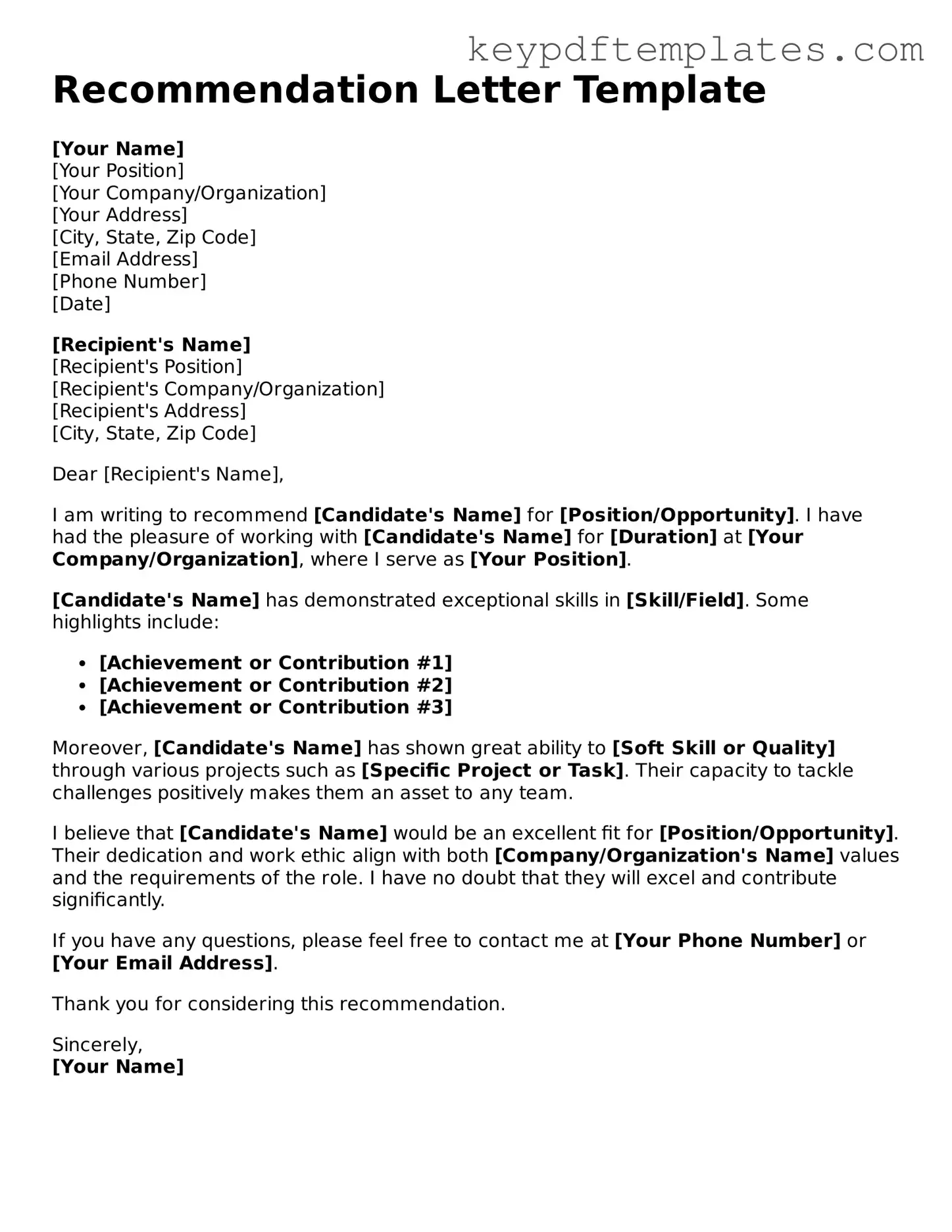Printable Recommendation Letter Template
A Recommendation Letter form is a document used to collect endorsements from individuals who can vouch for someone's skills, character, and qualifications. This form typically guides the recommender in providing specific information that highlights the strengths of the individual being recommended. Understanding how to effectively utilize this form can significantly enhance the impact of a recommendation.
Modify Document Online
